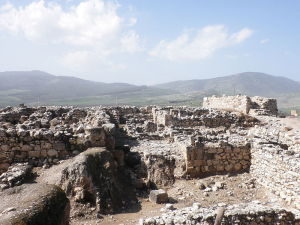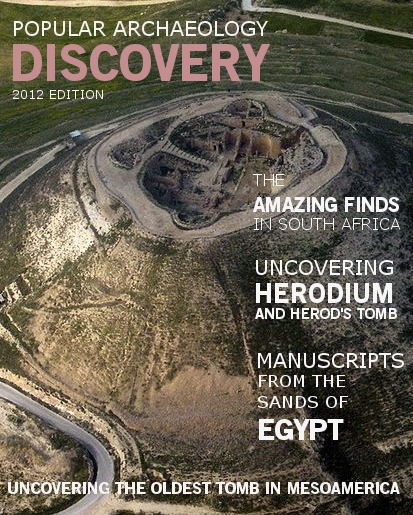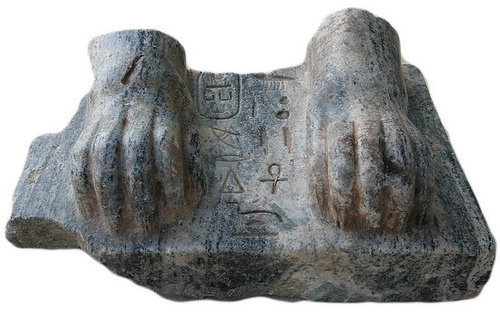
It was a once-in-a-lifetime find for Israeli archaeologist Amnon Ben-Tor of the Hebrew University in Jerusalem, who also co-directs excavations at the world-renowned site of Hazor in northern Israel. While digging at this ancient Canaanite location during the summer of 2013, he and his excavation team unearthed a surprising find — beautifully carved paws of what was once a complete stone Egyptian sphinx statue. It was discovered near the entrance of the remains of an ancient city palace in a destruction layer dated to the 13th century B.C.
“This is of extreme importance from many points of view,’ said Ben-Tor, “since it is the only sphinx of this king known in the world — even in Egypt. It is also the only monumental piece of Egyptian sculpture found anywhere in the Levant.”
The Levant is the region of the eastern Mediterranean stretching between Anatolia and Egypt. Today it includes the modern states of Lebanon, Syria, Jordan, Israel, the Palestinian territories, Cyprus and parts of southern Turkey. Although many ancient Egyptian finds, including architecture, have been unearthed in archaeological excavations throughout the region, no monumental sculpture attributable to the Egyptians have been recovered in this region outside of Egypt.
Inscribed in hieroglyphic in the stone between the paws of the large fragment was the name of the Egyptian Old Kingdom 4th dynasty pharaoh Menkaure (c. 2500 BC), also known by his Hellenized name as Mykerinos. Menkaure is thought to be the phaaraoh responsible for the construction of the smallest of the three great pyramids at Giza.
_______________________________________________________________________________________________________________________
The lower (paws) portion of the sphinx found during the 2013 excavations at Tel Hazor. Photo courtesy Prof. Amnon Ben-Tor and Dr. Sharon Zuckerman, Hazor Excavations Project.
_______________________________________________________________________________________________________________________
What was the sphinx, or at least this portion of it, doing at Hazor?
“Maybe this was a gift which the Egyptian king sent to the local [Canaanite] king of Hazor. Maybe. To prove it? Impossible,” said Ben-Tor.
Historically, Hazor was likely the largest of the ancient Canaanite cities, and for a time was among the largest cities of the Levant. Today, the archaeological remains encompass 200 acres. Its population in the second millennium BC is estimated to have been about 20,000 people, and was strategically located on the route connecting Egypt and Babylon, making it a dominant economic and trading power in the region. Dig co-directors Amnon Ben-Tor and Sharon Zuckerman lead the current excavations, which have thus far revealed no less than 21 superimposed cities, including temples, fortifications and a huge water system.
The archaeologists estimate that the complete sphinx was about one meter tall, weighing half a ton. Will they find the rest of it? That’s a goal of the continuing excavations.
Anyone interested in participating in the Hazor excavations may obtain more information about the site and how to apply at http://hazor.huji.ac.il/.
__________________________
Cover Photo, Top Left: View of the remains at Hazor. Qasinka, Wikimedia Commons
______________________________________________________________________________________________________________________
Read about the most fascinating discoveries with a premium subscription to Popular Archaeology Magazine. Find out what Popular Archaeology Magazine is all about. AND MORE:
 Popular Archaeology’s annual Discovery edition is a selection of the best stories published in Popular Archaeology Magazine in past issues, with an emphasis on some of the most significant, groundbreaking, or fascinating discoveries in the fields of archaeology and paleoanthropology and related fields. At least some of the articles have been updated or revised specifically for the Discovery edition. We can confidently say that there is no other single issue of an archaeology-related magazine, paper print or online, that contains as much major feature article content as this one. The latest issue, volume 2, has just been released. Go to the Discovery edition page for more information.
Popular Archaeology’s annual Discovery edition is a selection of the best stories published in Popular Archaeology Magazine in past issues, with an emphasis on some of the most significant, groundbreaking, or fascinating discoveries in the fields of archaeology and paleoanthropology and related fields. At least some of the articles have been updated or revised specifically for the Discovery edition. We can confidently say that there is no other single issue of an archaeology-related magazine, paper print or online, that contains as much major feature article content as this one. The latest issue, volume 2, has just been released. Go to the Discovery edition page for more information.
Subscription Price: A very affordable $5.75 for those who are not already premium subscribers of Popular Archaeology Magazine (It is FREE for premium subscribers to Popular Archaeology). Premium subscribers should email populararchaeology@gmail.com and request the special coupon code. Or, for the e-Book version, it can be purchased for only $3.99 at Amazon.com.






